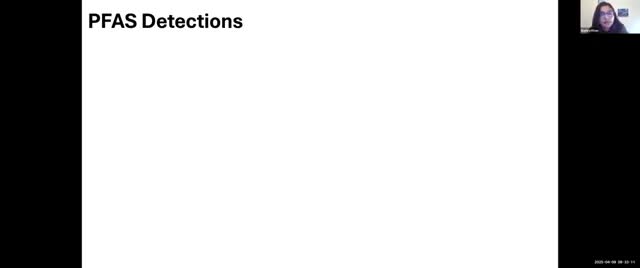PFAS data reveals widespread contamination patterns across 40 tier 2 urban sites
April 26, 2025 | California Water Quality Monitoring Council, Boards and Commissions, Executive, California
This article was created by AI summarizing key points discussed. AI makes mistakes, so for full details and context, please refer to the video of the full meeting. Please report any errors so we can fix them. Report an error »

The California Water Quality Monitoring Council's recent meeting spotlighted the ongoing analysis of PFAS (per- and polyfluoroalkyl substances) data, revealing significant trends in contamination levels across urban sites. The discussion highlighted that while the initial two years of PFAS data were of questionable quality, the 2023 and 2024 datasets are beginning to show clearer patterns.
Key findings indicate that PFOS and PFOA, both eight-carbon chain compounds, were the most frequently detected PFAS substances, with PFOS appearing at 36 out of 40 monitored sites. Notably, longer-chain carboxylates, specifically those ranging from C10 to C14, were also widely detected, raising concerns due to their persistence and potential for bioaccumulation.
The analysis, which will require an additional two years of data for comprehensive trend building, suggests that certain sites exhibit complex PFAS profiles, indicating varying levels of contamination. The council emphasized the importance of continued monitoring to understand how these detections may evolve over time.
As California grapples with PFAS pollution, these findings underscore the need for ongoing vigilance and research to address the environmental and health impacts of these persistent chemicals. The council plans to further explore these trends in future meetings, aiming to enhance public awareness and inform policy decisions.
Key findings indicate that PFOS and PFOA, both eight-carbon chain compounds, were the most frequently detected PFAS substances, with PFOS appearing at 36 out of 40 monitored sites. Notably, longer-chain carboxylates, specifically those ranging from C10 to C14, were also widely detected, raising concerns due to their persistence and potential for bioaccumulation.
The analysis, which will require an additional two years of data for comprehensive trend building, suggests that certain sites exhibit complex PFAS profiles, indicating varying levels of contamination. The council emphasized the importance of continued monitoring to understand how these detections may evolve over time.
As California grapples with PFAS pollution, these findings underscore the need for ongoing vigilance and research to address the environmental and health impacts of these persistent chemicals. The council plans to further explore these trends in future meetings, aiming to enhance public awareness and inform policy decisions.
View full meeting
This article is based on a recent meeting—watch the full video and explore the complete transcript for deeper insights into the discussion.
View full meeting
